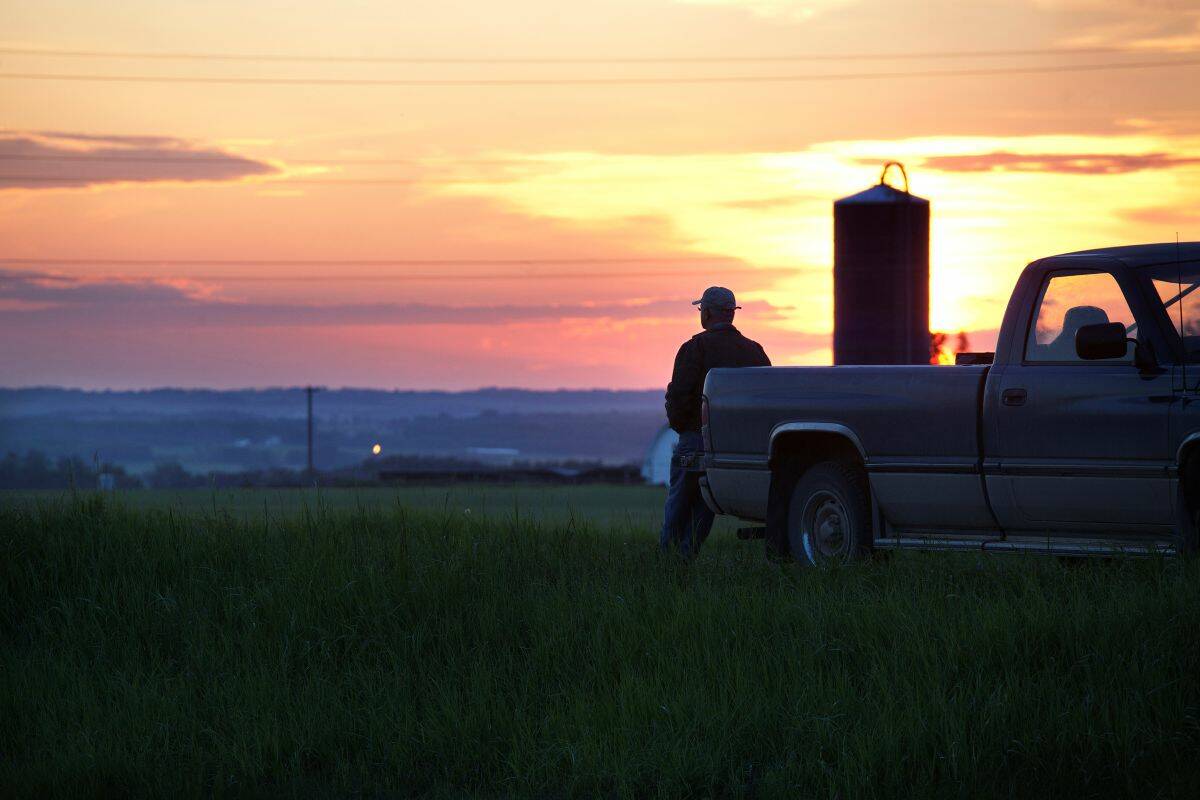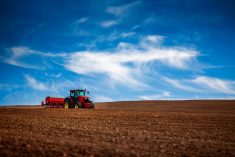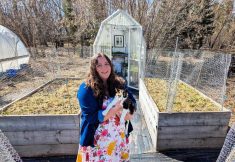In 2010, Canada’s mid-size farms seemed bound for extinction. Now, they’ve got a shot
Only a few years ago, economists, accountants and rural development specialists were all forecasting that agriculture would evolve into the proverbial doughnut. The middle would be missing. In the near future, this legion of experts said, farms that survived would either have to be very, very large, or they would have to be very, very small.
In between, there’d be a no-man’s land. Or rather, a no-farmer’s land, where the remaining mid-size farms would slowly fade and falter.
Read Also

It doesn’t have to be the end for your farm
Options for farmers without successors to pass on the farm.
Smaller farmers grossing less than $250,000 a year would still exist, but they’d be producing niche crops and livestock, and they would boost their margins via marketing to stores and to consumers.
The big operations grossing over $1 million a year, meanwhile, would be economic juggernauts. As commodity producers, their economies of scale would give them so big an advantage that medium-size operations simply wouldn’t be able to compete.
The inevitable outcome, the experts predicted, would be their farm-income doughnut, with few or no middle-size farms.
And it’s true, the big-picture statistics did look pretty bleak for the mid-size category. In 2010, only about 37,000 farms (a quarter of Canadian farmers) fell between the two marketing extremes, producing between $250,000 and $1 million in gross sales a year.
For comparison, some 9,500 farms grossed over $1 million in sales in 2010, and almost a quarter of the total Canadian farm revenue came from the 2,000 farms with annual revenue over $2.5 million. Those big farms also invested more than $500,000 per year in their businesses.
Yes, it did look like the only way to survive would be to get big, or to get small.
Some experts still say that mid-size farms are the most vulnerable in today’s polarized markets, since they are too small to compete in the highly consolidated commodity sector and too large and commodity-driven to sell in the direct markets.
Nor, according to the statistics, are they keeping up by reinvesting in farm assets, which would sooner or later have to catch up with them.
Indeed, a group of Midwestern U.S. extension staff (Fred Kirschenmann, Steve Stevenson, Fred Buttel, Tom Lyson and Mike Duffy) have gone so far as to create an initiative to renew what they term “agriculture of the middle.”
“If present trends continue, these farms, together with the social and environmental benefits they provide, will likely disappear in the next decade,” says the group’s white paper.
Yet, in the blackness of this prediction stands a beacon of efficiency: the medium-size family farm.
Stable and less indebted than the very large farms, mid-size farms tend to be run with tight owner management and often are multi-enterprise. Their business goal isn’t necessarily to get bigger, but to get fundamentally better.
Below all the noise about expansion, corporate ownership, bailouts and global competition, medium-size farms have grown cautiously. They take on less debt and only expand when it makes sense financially and when it matches their machinery and labour capacity.
These farms are operating with stellar efficiency in the predicted doughnut hole. They are run by owner-operators who are usually related and are big enough so individuals can specialize in what they’re good at.
Importantly, recent technology advancements have also allowed these families to produce larger amounts of sales without hiring a big staff.
These farms don’t have a lot of overhead, and marketing tends to not be complex, says David Sparling of the Ivey School of Business at Western University in London, Ont.
“At the top end of the medium-size class are farms in the sweet spot,” Sparling says.
When Sparling and colleague Florentina Uzea analyzed Ottawa’s farm financial data they found that farms with sales of at least $500,000 actually increased to six per cent of the farm population between 2005 and 2010. These farms now account for more than two-thirds of industry sales, up from 55.6 per cent in 2005. (While part of the shift may be attributed to higher grain prices resulting in higher farm sales, this would be counterbalanced by the collapse of both beef and pork prices over the same time frame.)
“In the last few years these (mid-size) farms have tended to drift into the next category,” says Sparling. “With new technology and better grain prices they are producing more and more.”
Since Larry Spratt and his cousin Mike Spratt graduated college and came back to work on the Melfort, Sask. family farm 12 years ago, they’ve been smack in the middle of the most intensive period of farm consolidation in history. With four families to support, the Spratts quietly, slowly built up their land base to 5,000 acres of wheat, barley, oats and canola, and they have 3,500 acres of hay, pasture, silage and swath grazing both to feed their 200 purebred cows and bulls and to background their own calves.
Scale is relative to a geography’s production capacity and how production is marketed. Like many medium-size farms, the Spratts market their grains and oilseeds via nearby elevators. But they also direct-market. They have a niche market with their breeding stock, sell finished beef directly to local consumers, and also sell some hay and alfalfa bales.
The Spratts also focus on efficiency, not necessarily expanding in huge volumes. “To capture economies of scale, I need to maximize outputs from minimized inputs,” says Larry Spratt. “We try to match our HR and machinery to get the most per cow and per acre.”
With this kind of dedication, farms this size achieve better operating margins. Sparling and Uzea found that farms with sales of $250,000 to $500,000 saw average margins rise to 12.7 per cent in 2010 from 6.5 per cent in 2005, and farms with sales of $500,000 to $1 million saw average margins rise to 13.7 per cent in 2010 from 9.9 per cent in 2005.
“The aggregate numbers that we have available support, to some extent, this idea of medium-size farms focusing on efficiencies,” says Uzea. “On average, expenses decreased for these farms (along with farms selling more than $2.5 million), while they increased for farms in the other size categories.” (See Figure 1.)
Equally significant, medium-size farms’ sales and margins don’t fluctuate as much year to year. “These farms can survive,” says Sparling. “They’re stable because they are lean and can just cut back and manage to get through it.”
Along with their fathers, Don and Ross, the Spratt cousins farm together as one unit and with one line of new equipment. They don’t employ non-family members. The only outside contracted work they use is two days of feedlot cleaning service and a good accountant who knows their operation. Otherwise all work, including everything from bookkeeping to field scouting and artificially inseminating cows, is done by one of them.
Everyone has the same percentage ownership in everything and the same deep commitment to making their farm successful. Their management style is as if each one of them is a sole proprietor with partners, says Larry. He estimates that if each of them farmed by themselves, they’d individually need 1,000 to 1,500 acres with 50 to 80 cows and their own, probably older, equipment.
Instead they try to take advantage of some efficiencies of scale and specialization of tasks and management. Mike manages the cattle and Larry does the grain, but everyone helps each other get the work done.
In their part of the country, the oilfields are competing for people so hiring employees is a big challenge. Besides, when everyone is very capable and has the power to make decisions, there’s no training time and equipment breakdowns are fixed immediately. “I don’t want to spend my time babysitting guys,” says Larry.
Larry says, too, that larger farms usually have higher management costs and are at more risk if there’s a downturn. Over the years, he has noticed medium-size farms seem to handle changes better, whether it’s extreme weather or markets. However, larger farms can spread costs over more acres.
“Larger farms might have a better return to management and return to ownership,” says Larry. “And they have the advantage of buying in bulk with their machinery and crop inputs.”
At a recent producer meeting Larry attended, a chemical salesperson showed a chart with the larger rebates a farmer would get with the larger quantities purchased. Similarly, larger farms buying more equipment more often would probably get a reduced price. To try to capture some of this buying power, the Spratts have done multi-piece equipment deals — they find buying several pieces all at once gives them more negotiating power.
Several years ago, researchers at the University of Manitoba found the lowest cost/highest production per acre units are often family farms operating pods of production based on equipment and labour capacities. It was estimated that one combine, one air seeder and one farmer could manage to seed and harvest about 3,000 to 5,000 acres, with Manitoba’s limited seeding and harvest windows.
Of course, the types of crops, weather constraints and optimal seeding and harvest windows will affect this number. For example, areas with longer growing seasons or drier climates are likely able to farm more acres with the same equipment. Consistently, however, crop size increases are simply being driven by size of equipment with labour as the limiting factor. The most efficient machinery assets are usually the largest available as they can cover the most acres in limited seeding and harvest windows.
To capture efficiency, production pods are replicated, jumping farms to 6,000 or 10,000 acres and doubling up equipment. The Spratts are in a medium-size catch-22. Their one line of equipment includes one combine, a sprayer, two semis, a swather, a 50-foot air seeder, one baler and a couple of tractors. Although they’ve maxed out the hours that their one combine — the biggest conventional one that New Holland makes — can do in a year, they don’t have enough work for two combines.
Additionally, the logistics of expanding in smaller increments has become more difficult. Custom harvesting crews require a guaranteed number of acres, and hiring local custom operators is limited as everyone’s finished about the same time anyway.
An overarching limiting factor in many areas and sectors is that there simply isn’t a chance to expand enough to look at adding another combine, buying a bigger air seeder, or hiring on extra help. “The biggest hurdle on our farm right now is land,” say Larry. “Not so much the price of land — purchase or rental — but just getting it.”
Like many medium-size farmers, the Spratts might have a relative advantage over larger farms in things like working capital, debt to equity and debt structure ratio. They own 65 per cent of their land and the rest is crop-shared and cash-rented, so they could afford to increase their land base. However, it’s simply not available — or the Spratts don’t want to get into a bidding war. Rent in the Melfort area runs $70 to $80 per acre, some of the highest in Saskatchewan.
“But equity doesn’t pay the bills,” says Larry.
Instead the farm is focused on paying off existing loans and on maximizing each acre of output by keeping input costs as low as possible. If the price is right, they might add some commercial cows to calve in mid-spring so they can improve cash flow on their cattle enterprise.
Instead of building a genetic base by expanding the purebred herd, it would allow them to get in and out as markets dictated. To increase the cow herd up to 30 per cent would not require more equipment, says Larry, just another day to make silage, and they could make better use of their existing marginal land and stubble grazing.
“If we dropped the cattle we’d need 10,000 acres to match net income, and if we dropped the grain we’d need 700 to 800 commercial cows,” says Larry.
With the only two major slaughter plants in Western Canada an eight-hour drive away, they’ve stopped finishing cattle and have gone to backgrounding. Now many local feedlots are closing, reducing the buyers for their market calves. “On the cattle side, the biggest hurdle is the end-user for our product,” says Larry.
Over the years, the Spratts have found many synergies between their livestock and grain operations beyond using feed-quality grains and spreading manure. The cows help them maximize the skills of the people on their family farm and spread out the labour needs, as they calve in January and February. Most of their equipment serves multiple purposes. Instead of having only grain trailers and water tanks, semis are used with cattle liners and flat decks for moving feed. Their self-propelled swather is used for haying with its disc bine attachment.
“There are many different ways of looking at financials and when we look at an issue on our farm it boils down to feasibility and profitability,” says Larry. “Something might be feasible but it’s not profitable and vice-versa.”
— Maggie Van Camp is an associate editor with Country Guide at Blackstock, Ont. This article originally appeared on page 22-26 in the May-June 2013 issue.

















